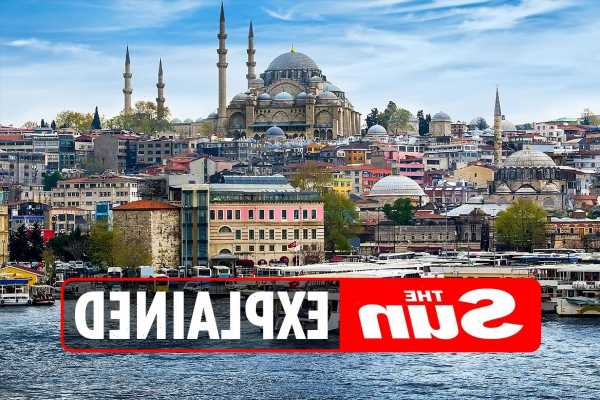ISTANBUL is the largest city in Turkey, and the most populated city in Europe, with a total of over 15 million people living there.
But not all of Istanbul's vast population live in Europe – as the sprawling cityis one of just five in the world that straddles two continents.
Is Istanbul in Europe?
The Bosphorus Strait waterway divides the city of Istanbul in two, so that it has a European part and an Asian part.
The European side has had many names, including Avrupa Yakasi and Thrace, and it borders Bulgaria and Greece in Southeast Europe.
This side of Istanbul includes trendy neighbourhood Galata, popular for its nightlife, as well as the ancient part of the city, where historic places of worship can be found such as the Hagia Sophia and the Blue Mosque.
The European side of Istanbul holds about 65 per cent of the city's population, whilst the Asian side holds the remaining 35 per cent.
The Asian side is the oldest part of Istanbul, and has been called Anatolia, or Asia Minor.
It is a naturally beautiful and peaceful peninsula, with access to the Sea of Marmara, the Bosphorus Straits, the Black Sea, and the Egian.
It is also home to the famous Kadikoy Flea Markets.
The European part is the commercial centre, whilst the Asian part is more residential and relaxed. Two suspension bridges connect the two parts.
Why is Istanbul in two continents?
Istanbul is in two continents because it developed as two separate cities, on either side of a popular trade route, and was later united by two bridges.
Part of Turkey is land-joined to Europe, and the bigger part to Asia.
The Bosphorus Straits and Sea of Marmara that divide these two parts is narrow, and has been a crucial trade route for millennia.
When settlements grew up on both sides of these waterways, it was logical that they worked together across the water, and were eventually united by bridges, to form one country, Turkey, and one city, Istanbul.
The 31-kilometre Bosphorus Strait is the only waterway joining the Black Sea with the Sea of Marmara, which in turn flows out into the Mediterranean.
Cities appeared first on the Asian side of the Bosphorus, long before the Greeks built Bizantium -which became European Istanbul – on the European side, in 660BCE.
Bizantium was renamed Constantinople in 330AD, after the Roman Emperor, and it was the eastern capital of the Roman empire, and crucially, the point of contact with the East.
After the Ottoman conquest of the city it became the seat of the last Caliphate, in 1453.
The two parts were not united into Istanbul until the late 19th century.
In 1923, the modern republic of Turkey was established after the Turkish war of independence.
Although Ankara was chosen as the capital, Istanbul remained important, and is today considered the economic and cultural centre of the country.
What continent is Istanbul in for travel insurance?
Istanbul is treated differently with regard to travel insurance, depending on your insurer and your policy.
Some include Istanbul, and in fact all of Turkey, in their European cover, while others consider it to be part of Asia and include it in their ‘worldwide’ cover.
Basically, check with your insurer, and remember that Turkey is not part of the European Union, so is not automatically covered by your EHIC card.
Istanbul is a popular tourist destination. It is the fifth-largest city in the world by population, and is home to 19 per cent of the population of Turkey.
Is the rest of Turkey in Europe?
No, the rest of Turkey is not necessarily in Europe.
Geographically, Turkey is in two parts: one, small part, is joined to the continent of Europe, and the European part of Istanbul is on this part of Turkey.
The other part of Turkey has land borders in Asia, with Syria, Iraq, Iran, Georgia and Armenia.
Most read in Travel
SITTING COMFORTABLY I’m a frequent flyer and here's the best economy seat for long-haul
The 3 things you should always take on flights, according to doctors
I'm a Disney expert and here's the biggest mistake you can make at the park
I was a hotel secret shopper and there are 3 things to do to get a free upgrade
The Bosphorus separates the two parts of Istanbul, whilst the Sea of Marmara separates the two geographical parts of Turkey.
The two sides were once separate, accessible to each other only by boat, but there are now a few bridges that link them.
Turkey has long-standing cultural, political and religious links with both Europe and Asia.
For example, Turkey takes part in the Eurovision Song Contest, but is not part of the European Union.
Source: Read Full Article





